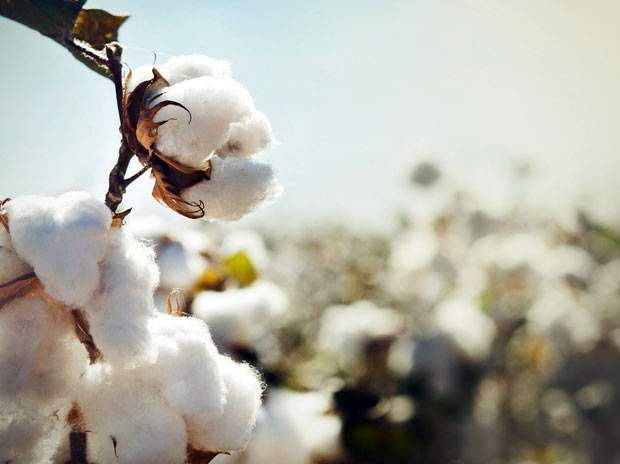Bacon lovers of the world, rejoice! Or at the least take solace that your beloved pork belly may be better for the environment in terms of greenhouse gas emissions than the lettuce that accompanies it on the classic BLT.
This is according to a new study by researchers at Carnegie Mellon University who found that if Americans were to switch their diets to fall in line with the Agriculture Department’s 2010 dietary recommendations, it would result in a 38 percent increase in energy use, 10 percent bump in water use and a 6 percent increase in greenhouse gas emissions.
The reason for this is because on a per-calorie basis, many fruits, vegetables, dairy and seafood—the foods the USDA pushes in the guidelines over sugary processed food and fats—are relatively resource-intensive, the study finds. Lettuce, for example, produces three times more greenhouse gas emissions than bacon.
“You cannot just jump and assume that any vegetarian diet is going to have a low impact on the environment,” said Paul Fischbeck, professor of social and decision sciences and engineering and public policy and one of the authors of the study. “There are many that do, but not all. You can’t treat all fruits and veggies as good for the environment.”
The researchers conducted a meta-analysis of life-cycle assessments quantifying the water, energy use and emissions for more than 100 foods. They found fruits have the largest water and energy footprint per calorie. Meat and seafood have the highest greenhouse gas emissions per calorie.
To create a baseline of how many calories the average adult American consumes, the researchers used weight data provided by the Centers for Disease Control and Prevention and calculated how many calories a person would need to consume in order to maintain that weight. The average calories per day came in at 2,390 per day, or about 200 more than recommended. The researchers tacked on an additional 1,230 calories to account for food waste.
“If what your concern is the greenhouse gas emissions or energy or water use of the entire system, I don’t think you should leave out large chunks of it,” Fischbeck said. “If you want to know how much energy is being consumed, you have to include waste and what is lost from grocery store or dining room table.”
That’s not to say all vegetables are bad. Onions, okra, carrots, broccoli and Brussels sprouts all have decent environmental footprints. Lettuce, on the other hand, is difficult to grow, harvest and transport. It requires significant amounts of water and energy to produce.
“I would eat less lettuce and more Brussels sprouts,” he added.
Some confusing comparisons
Martin Heller, a research specialist with the Center for Sustainable Systems at the University of Michigan and a colleague, published a similar
analysis last year. If Americans shifted to following the Agriculture Department’s dietary guidelines, they would consume less meat—good for emissions—but would drink more milk—bad for emissions, the study found (
ClimateWire, May 8).
Switching to a lacto-ovo vegetarian diet would result in a 33 percent decrease in emissions. Vegan diets are 53 percent more efficient.
Heller said the Carnegie Mellon paper did a good job of estimating Americans’ daily caloric intake and expanded on his work by quantifying the energy and water impacts of different foods.
But on the bacon-versus-lettuce greenhouse gas emissions showdown, Heller called the comparison “ridiculous.”
“We don’t eat lettuce for its calories,” he said, adding that is why in his food analyses he prefers to do assessments of full diets rather than food-by-food caloric comparisons.
“It’s much easier to compare diets that are different but provide a similar level of nutrition,” he said.
One limitation to all studies that aim to quantify the environmental impacts of human diets is that many of the life-cycle analyses used by researchers are conducted in other countries. In addition, they are often conducted on food commodities, not necessarily the processed products one finds in the grocery store.
The environment likes fats and sugars
To preserve both the Earth’s health and your own, Heller suggests cutting out meat. In the new analysis, beef was 3 ½ times more environmentally intensive than pork. A 2014 Chatham House
report found greenhouse gas emissions from the livestock sector are estimated to account for 14.5 percent of the global total, more than direct emissions from the transport sector.
Fischbeck said the takeaway from the analysis is policymakers need to take a closer look at foods on an individual basis, especially as USDA prepares to release its 2015 Dietary Guidelines, expected in a matter of days. These recommendations will guide food purchasing for the federal school lunch program as well as form the basis for federal nutrition policy for the next five years.
Earlier this year, the advisory committee helping to form the recommendations released a report that included environmental impacts in its assessment for the first time (
ClimateWire, March 25).
It recommended that Americans adopt a more plant-based diet with plenty of fruits, vegetables, whole grains and legumes. A number of environmentalists and public health experts are hoping to see the considerations included in the official guidelines.
Fischbeck said that even though it seems counterintuitive, the best diet for the environment would be terrible for a person’s health.
“If you totally forget health, which diet would have best impact on the environment?” Fischbeck asked. “You’d eat a lot more fats and sugars.”
The research was published in the journal
Environment Systems and Decisions. Co-authors included Michelle Tom and Chris Hendrickson.
*Editor’s Note (12/18/15): The headline of this article was changed to clarify that the comparison between lettuce and bacon is on a “per calorie” basis.
Reprinted from Climatewire with permission from Environment & Energy Publishing, LLC. www.eenews.net, 202-628-6500






